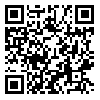1. [1] M. A. Akhaee and F. Marvasti, “A survey on digital data hiding schemes: Principals, algorithms, and applications.” ISeCure, vol. 5, no. 1, 2013.
[2] R. Toosi, M. Sadeghi, and M. A. Akhaee, “Robust image watermarking using sample area quantization,” Multimedia Tools and Applications, vol. 78, no. 24, pp. 34 963–34 980, 2019.
[3] A. Westfeld and A. Pfitzmann, “Attacks on steganographic systems,” in Proc. 3rd Int. Workshop on Information Hiding, vol. 1768, 1999, pp. 61–76.
[4] J. Harmsen and W. A. Pearlman, “Steganalysis of additive-noise modelable information hiding,” in Society of Photo-Optical Instrumentation Engineers (SPIE) Conf., vol. 5020, Jun. 2003, pp. 131–142.
[5] A. D. Ker, “Steganalysis of LSB matching in grayscale images,” IEEE Signal Process. Lett., vol. 12, no. 6, pp. 441 – 444, Jun. 2005.
[6] Y. Q. Shi, C. Chen, and W. Chen, “A markov process based approach to effective attacking JPEG steganography,” in Information Hiding. Springer, 2007, pp. 249–264.
[7] J. Kodovsky and J. Fridrich, “Steganalysis in high dimensions: Fusing ` classifiers built on random subspaces,” in IS&T/SPIE Electronic Imaging. International Society for Optics and Photonics, 2011, pp. 78 800L– 78 800L.
[8] Pevny, P. Bas, and J. Fridrich, “Steganalysis by subtractive pixel adjacency matrix,” Information Forensics and Security, IEEE Transactions on, vol. 5, no. 2, pp. 215–224, 2010.
[9] J. Kodovsky, J. Fridrich, and V. Holub, “Ensemble classifiers for steganalysis of digital media,” Information Forensics and Security, IEEE Transactions on, vol. 7, no. 2, pp. 432–444, 2012.
[10] R. Toosi, S. Salehkalaibar, and M. A. Akhaee, “Improved ensemble growing method for steganalysis of digital media,” Multimedia Tools and Applications, vol. 78, no. 8, pp. 9877–9893, 2019.
[11] M. Hamghalam, S. Mirzakuchaki, and M. A. Akhaee, “Robust image watermarking using dihedral angle based on maximum-likelihood detector,” IET Image Processing, vol. 7, no. 5, pp. 451–463, 2013.
[12] M. Sadeghi, R. Toosi, and M. A. Akhaee, “Blind gain invariant image watermarking using random projection approach,” Signal Processing, vol. 163, pp. 213–224, 2019.
[13] J. Mielikainen, “LSB matching revisited,” Signal Processing Letters, IEEE, vol. 13, no. 5, pp. 285–287, 2006.
[14] . Sarreshtedari, M. Ghotbi, and S. Ghaemmaghami, “One-third probability embedding: Less detectable LSB steganography,” in Multimedia and Expo, ICME 2009. IEEE International Conference on, 2009, pp. 1002–1005.
[15] X. Li, B. Yang, D. Cheng, and T. Zeng, “A generalization of LSB matching,” Signal Processing Letters, IEEE, vol. 16, no. 2, pp. 69 – 72, feb. 2009.
[16] M. A. Akhaee, S. M. E. Sahraeian, and F. Marvasti, “Contourlet-based image watermarking using optimum detector in a noisy environment,” IEEE Transactions on Image Processing, vol. 19, no. 4, pp. 967–980, 2009.
[17] H. M. Sun, K. H. Wang, C. C. Liang, and Y. S. Kao, “A LSB substitution compatible steganography,” in TENCON 2007 - IEEE Region 10 Conf., Nov. 2007, pp. 1 –3.
[18] S. Sarreshtedari and M. Akhaee, “One-third probability embedding: a new ± one histogram compensating image least significant bit steganography scheme,” Image Processing, IET, vol. 8, no. 2, pp. 78–89, February 2014.
[19] D. C. Wu and W. H. Tsai, “A steganographic method for images by pixel-value differencing,” Pattern Recognition Letters, vol. 24, no. 9–10, pp. 1613 – 1626, 2003.
[20] W. Luo, F. Huang, and J. Huang, “Edge adaptive image steganography based on LSB matching revisited,” Info. Forensics and Security, IEEE Trans. on, vol. 5, no. 2, pp. 201 –214, Jun. 2010.
[21] H. M. Sun, C. Y. Weng, C. F. Lee, and C. H. Yang, “Anti-forensics with steganographic data embedding in digital images,” Selected Areas in Communications, IEEE Journal on, vol. 29, no. 7, pp. 1392 –1403, Aug. 2011.
[22] . Zhang and S. Wang, “Efficient steganographic embedding by exploiting modification direction,” Communications Lett., IEEE, vol. 10, no. 11, pp. 781 –783, Nov. 2006.
[23] R. M. Chao, H. C. Wu, C. C. Lee, and Y. P. Chu, “A novel image data hiding scheme with diamond encoding,” EURASIP J. Inf. Security, vol. 2009, 2009.
[24] H.-S. Leng, J.-F. Lee, and H.-W. Tseng, “A high payload emd-based steganographic method using two extraction functions,” Digital Signal Processing, vol. 113, p. 103026, 2021.
[25] S. Saha, A. Chakraborty, A. Chatterjee, S. Dhargupta, S. K. Ghosal, and R. Sarkar, “Extended exploiting modification direction based steganography using hashed-weightage array,” Multimedia Tools and Applications, vol. 79, no. 29, pp. 20 973–20 993, 2020.
[26] Q. Ke, Q. Liao, and R. Pan, “An improved emd parallel steganography algorithm,” in Journal of Physics: Conference Series, vol. 1621, no. 1. IOP Publishing, 2020, p. 012006.
[27] R. Atta, M. Ghanbari, and I. Elnahry, “Advanced image steganography based on exploiting modification direction and neutrosophic set,” Multimedia Tools and Applications, pp. 1–19, 2021.
[28] W. Hong and T. S. Chen, “A novel data embedding method using adaptive pixel pair matching,” Info. Forensics and Security, IEEE Trans. on, vol. 7, no. 1, pp. 176 –184, Feb. 2012.
[29] J. Fridrich and J. Kodovsky, “Rich models for steganalysis of digital images,” Information Forensics and Security, IEEE Transactions on, vol. 7, no. 3, pp. 868–882, June 2012.
[30] The Dataset from the 2nd Bows Contest. (2012, Mar. 26) [Online]. Available: http://bows2.ec-lille.fr/.






